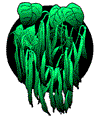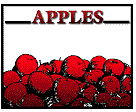

|
|
|
|
|
Introduction
Grice Middle School, located in a middle class suburban area, has approximately 850 students divided into two houses, Spirit and Pride, each containing sixth, seventh, and eighth grade classes. Each team consists of one reading, English, social studies, science, and mathematics teacher.
This math classroom overlooks the garden area with which the project deals. In the Grice media center are two computers with Internet capability. The class involved with the project is the Enriched 7th Grade Mathematics class with 25 students.
Background 
As part of a Mercer County Improvement Authority Grant that Grice Garden Club won in May 1998, funds became available to raise the garden beds in the new vegetable garden located just outside the mathematics classroom between A and B Halls. A number of the current math class members are also Grice Garden Club members. The 7th grade class has already been involved through the science class in a walk-about, a harvest, and a "Salad Bar Feast" so far this year. The class members are excited about the design project to begin in the new semester. The Garden Club has been in close contact with Mrs. Marily Richards, a Master Gardener who will be one source via e-mail for the new project.
Our goal is to apply geometry and measurement skills to create a uniquely designed series of raised beds for next spring's crop of vegetables in the area that is currently being used as flat beds. In addition an adjacent area of the garden will have its use created by the teams. The use and design of this additional garden area will be completely at the discretion of the team members.
The unit will last for approximately eight weeks. Teams will be researching the concept of raised bed gardening, getting pictorial samples of commercial frames currently available on the market, seeing applications of raised beds in places like botanical gardens, and contacting other schools already utilizing raised bed gardening and other habitat garden areas via the Internet. This knowledge in conjunction with mini-lessons on geometry and measurement will provide the basis for the development of each team's unique design for the Grice Garden raised beds. The design and utilization of the adjacent garden area will require brainstorming, research, and creativity of the team members. Five member teams were formed by the students after some discussions of the kinds of work to be accomplished by various team members. Since only two computers with Internet capability are currently available at school, it was decided to see by raised hands who had Internet at home. A little over half of the class raised their hands so it was determined that each team should have at least two of these persons on it. Since mathematical skills are a foregone conclusion in this advanced class, it was further noted that perhaps someone with artistic or drafting skills would be another good person to have on each team. The students also decided it would be a good idea to have at least one of the team members be actively involved with Grice Garden Club. This member should be knowledgeable about crops and gardening practices. The students had about a week before formally beginning the work to determine their placement on teams. Teams members will be involved in research, measurement of the existing area, planning the bed layout noting crop sunlight needs, and creation of the specification layout plans involving the design as well as the cost analysis of materials not currently in our possession. Further they will determine the use ( ex. recreational, habitat, etc.) of the area adjacent to the raised bed garden area.
Assessment will be performance based as well as traditional chapter content testing. Student teams will be evaluated in math class following team presentations. This will be based on a student developed rubric. Students will discuss and determine qualities of a good project as well as a good presentation of the project to prospective funding agents ( Presidents of PTA and Student Council). By clearly defining their means of final evaluation, it will help the teams to stay on target throughout the creation process.
Beginning 
Having had science classes and a harvest salad bar feast in the garden thus far, the members of the enriched math class have had several direct experiences with the Grice Garden. They are excited about being given the opportunity to make a real impact on next spring's garden by creating the raised beds for next year's crops. They wanted to know and make sure that someone would "really" build their designed beds over the winter and that they would "really" be used next year. They seemed eager to take on the responsibility. Following a brief description of the basic product and presentation expectations, the students will form into five person "company teams". They will meet to discuss division of labor for the project. Initially students will be involved in the Internet research and measurement of the existing garden area. Company teams will use several periods to do this intensive phase of the work during the first week. Initial brainstorming of the uses of the adjacent garden area will be followed by Internet research of possible uses to which this area may be dedicated. Other schools may be contacted that have garden and/or habitat sites. Following this, class periods will be divided between geometry and measurement mini-lessons and company team meetings in which newly gained information will be shared among team members. Mrs. Cherrington will go from group to group suggesting sources of answers for any questions that may arise. Near the end of the periods on Tuesday and Thursday groups will meet in a large group session to discuss their results thus far. Participation in both small and large group sessions will be part of the on-going assessment. As a part of one early large group meeting they will brainstorm various modes of presentation to develop a thinking process towards the end product presentation.
Middle 
By now teams will be in contact with commercial producers of raised beds obtaining geometric design ideas as well as cost analysis factors. They will be in contact via e-mail with agricultural agents, master gardeners, Mr Griggs, a landscape architect for the state of New Jersey, and other school gardeners to answer questions they may have about design, placement, crops, costs, etc. Mrs. Marily Richards, the Master Gardener, will visit the class and discuss placement of various crops based on solar patterns unique to the Grice Garden. Groups will be in the process of creating the geometric designs for the raised beds and developing a cost analysis sheet for materials needed. The will need to develop designs carefully so as to create an aesthetically pleasing garden complex. They will also have to present individual design sheets indicating exact measurements of all materials and internal angles of all geometric shapes so that construction of mitered edges can be accomplished in the school wood shop. The cost analysis teams will be working to complete a comprehensive listing of all materials needed by their team for the actual construction along with the cost and source of these materials. (additional funds will be available through the P.T.A. and Student Council). The measurement team members will now be using the geometric raised bed specifications to calculate the volume of soil medium necessary to fill each bed. (Some beds will be single height while others will be double height depending on location and crops. Others may be terraced for aesthetic qualities). Given a two parts compost (free) to one part topsoil ($) they must determine the total cost of filling each raised bed as part of their analysis. Groups will also determine the utilization of the adjacent area as recreational, habitat, etc. Additional materials for whatever the use will be not be factored into the $1,000 budget but will be requested separately from the Student Council. Groups will continue to meet in large group sessions on Tuesday and Thursday and in small groups on a daily basis following mini-lessons. Mrs. Cherrington will go from group to group discussing progress and problems. The plans are by now beginning to take shape and a detailed cost analysis is being formulated. The students are in contact with several other schools which have active raised bed garden programs and/or other habitat areas in their gardens. They have visited several virtual gardens in various city, state, or national botanical gardens throughout the country and the world via Internet.
End 
Student teams have been completing their detailed drawings of the overall garden design and individual raised bed designs. The measurement team members have completed the cost analysis of the materials (noting sources) and the volume computation of soil medium. They have discussed and decided to what use the adjacent garden are will be put and their designs for this area have been carefully developed. They have uniquely individual ideas for its use. They have invited the Presidents of the PTA and Student Council and Mrs. Richards, the Master Gardener, to attend their final team presentations. During these presentations they will present their proposal in the graphic formats of their choice.(charts, graphs, models,overheads, videos, etc.). Discussion with other schools involved in gardening is now on-going. Some of the groups found a community organization via the Internet that is involved in building a raised bed for poverty-line families so they can grow their own fresh vegetables. Some of the students have discussed this as a possible community outreach aspect of our Garden Club in addition to sharing the vegetables with the Senior Citizen's Center during the summer months that we did last year. Some of the students not already in the garden club are anxious to join to help build the raised beds during the winter months and then begin planting in the spring!
Return to the top of the page.
Created for the NTEP II Fermilab LInC program sponsored by Fermi National Accelerator Laboratory Education Office and Friends of Fermilab, and funded by United States Department of Energy, Illinois State Board of Education, North Central Regional Technology in Education Consortium which is operated by North Central Regional Educational Laboratory (NCREL), and the National Science Foundation.
Author(s): Karren Cherrington (karrenc@juno.com) School: Grice Middle School, Hamilton, N.J. Created: November 4, 1998 - Updated: URL: /ntep/f98/projects/pppl/karrenc/scenariogricegarden.html